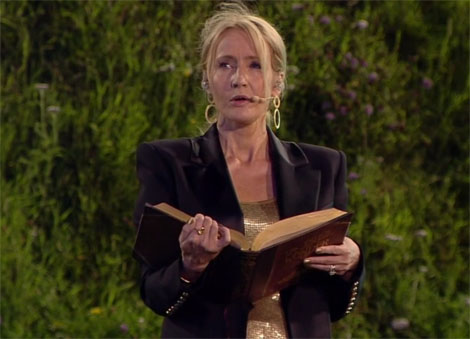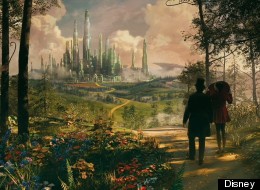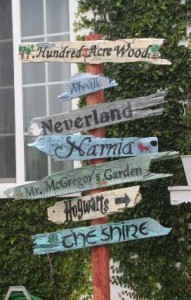 http://www.nzherald.co.nz/entertainment/news/article.cfm?c_id=1501119&objectid=10814807
http://www.nzherald.co.nz/entertainment/news/article.cfm?c_id=1501119&objectid=10814807
Dominic Corry writes about Hollywood’s feeding frenzy when it comes to fairy tales. The upcoming Sleeping Beauty film (Angelina Jolie wears Maleficent’s headdress) will evidently retell the story from the wicked queen’s point of view. It may be time to go back to Basile’s “Sun, Moon, and Talia” to figure out exactly how the new cinematic version could play out. In that story, the first literary version of “Sleeping Beauty,” the title figure is raped by a king–yes, while she is slumbering:
After a time, it happened by chance that a king was out hunting and passed that way. One of his falcons escaped from his hand and flew into the house by way of one of the windows. It did not come when called, so the king had one of his party knock at the door, believing the palace to be inhabited. Although he knocked for a length of time, nobody answered, so the king had them bring a vintner’s ladder, for he himself would climb up and search the house, to discover what was inside. Thus he climbed up and entered, and looked in all the rooms, and nooks, and corners, and was amazed to find no living person there. At last he came to the salon, and when the king beheld Talia, who seemed to be enchanted, he believed that she was asleep, and he called her, but she remained unconscious. Crying aloud, he beheld her charms and felt his blood course hotly through his veins. He lifted her in his arms, and carried her to a bed, where he gathered the first fruits of love. Leaving her on the bed, he returned to his own kingdom, where, in the pressing business of his realm, he for a time thought no more about this incident.
And, as we know from Italo Calvino, the winds of myth pass through the forest of fairy tales, and the king’s wife plots her revenge:
Now the king’s wife began to suspect that something was wrong from the delay of her husband while hunting, and hearing him name continually Talia, Sun, and Moon, she became hot with another kind of heat than the sun’s. Sending for the secretary, she said to him, “Listen to me, my son, you are living between two rocks, between the post and the door, between the poker and the grate. If you will tell me with whom the king your master, and my husband, is in love, I will give you treasures untold; and if you hide the truth from me, you will never be found again, dead or alive.” The man was terribly frightened. Greed and fear blinded his eyes to all honor and to all sense of justice, and he related to her all things, calling bread bread, and wine wine.
The queen, hearing how matters stood, sent the secretary to Talia, in the name of the king, asking her to send the children, for he wished to see them. Talia, with great joy, did as she was commanded. Then the queen, with a heart of Medea, told the cook to kill them, and to make them into several tasteful dishes for her wretched husband. But the cook was tender hearted and, seeing these two beautiful golden apples, felt pity and compassion for them, and he carried them home to his wife, and had her hide them. In their place he prepared two lambs into a hundred different dishes. When the king came, the queen, with great pleasure, had the food served.
And here’s Dominic Corry on fairy-tale fatigue:
With the modern film market driven by name and brand recognition more than ever, it makes a large degree of cynical sense that films based on fairy tales would proliferate.
These are, after all, arguably the most famous stories of all-time, and the digital special effects revolution means they can be sold with more grandiosity than ever before. But it doesn’t always make for good movies.
Beyond the obvious name recognition aspect, the other factor driving all these fairy tale movies is the ridiculous success of Tim Burton’s 2010 version of Alice In Wonderland.
That movie – which I cared for very little – made more than a billion dollars worldwide and just got pushed down to the eleventh spot on the list of all-time box-office champs by new No. 3 The Avengers.
Those kind of numbers send studio execs into a frenzy, and before long we had Red Riding Hood, the two Snow Whites, and plans for live action films inspired by Sleeping Beauty and Hansel and Gretel.
 http://www.nbcolympics.com/video/2012/opening-ceremony-olympic-bedtime-story.html
http://www.nbcolympics.com/video/2012/opening-ceremony-olympic-bedtime-story.html



